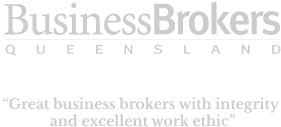
This article is an extract from a report by Shane Dingley of Business Brokers Queensland. You can download the full report (PDF file) here:
How to value a small business
Valuation vs Appraisal (Opinion of Selling Price)
Unlike Plant and Equipment Valuers or Property Valuers, there is far less formal or recognised certification or accreditation for business valuation. The AIBB has introduced the Registered Business Valuer accreditation but this is yet to be formally recognised in legislation, by other professional bodies or by the courts.
Definition of Market Value for Valuations:
“Market value is the estimated amount for which a property should exchange on the date of valuation between a willing buyer and a willing seller in an arms length transaction after proper marketing wherein the parties had each acted knowledgably, prudently and without compulsion.”
(International Valuation Standards; 2005; Seventh Edition, IVS 1, Market Value Basis of Valuation/Scope, p82)
Differences between an Appraisal and a Formal
- Valuation Valuation results in one figure where an appraisal can result in a reasonable range of prices from optimistic to pessimistic.
- A market valuation is performed in accordance with specific instructions and is subject to a range of legal responsibilities that could result in damages against the Valuer whereas an appraisal is typically an informal opinion of most likely selling price range which has significantly lower legal risk for the assessor.
- Appraisals lack the rigour and detail of formal valuations and are usually disclaimed as estimates only.
- Appraisals are subject to agreed marketing programs which in practice could be limited by budget and confidentiality.
- Valuations are limited in definition (e.g. to willing buyer by a willing seller… without compulsion…) and an appraisal will be based on perceived urgency of buyers or the seller in the current market.
Strategic Sale vs Financial Sale
Often we hear about how the opportunity or potential in a business justifies a higher price than what is supported by earnings.
Strategic Sale
Value provided by the Buyers ability to exploit the underlying assets or capabilities of the business.
“Strategic value businesses create value by enabling a large corporation, the strategic buyer, to exploit a significant revenue opportunity enabled through the combination of the two companies. The strategic seller builds value by developing strategic assets and capabilities which the large company will exploit”
P53. Invest to Exit. Tom McKaskill
Financial Sale
Value derived from the future profit generating power of the business.
“Probably about 95% of all private businesses which are sold are acquired by a financial buyer. What the financial buyer is acquiring is a profit stream and so the basis of the purchase is simply how much profit the firm makes now and is likely to make in the future”
P 55. Invest to Exit. Tom McKaskill
Strategic Sale does not apply to a small business with potential for growth.
Examples of Strategic Value:
- Protected Product /Invention sold to Buyer with significant distribution chain
- Significant market share acquired to access to new geographic market
- Complementary Products or services acquired for vertical integration
- Famous Brand or Intellectual Property
What entity are you valuing?
Value figure will be different depending on what is getting valued:
- Enterprise Value – Comprised of Debt and Equity
- Company Value – Equity Component only. Enterprise Value less Liabilities
- Equity Value – Value of part of Equity proportional to shareholding
- Asset Value – Tangible Assets
In most Cases, Business Brokers will value Business Value only
- Business Value – Enterprise Value excluding Current Assets, Liabilities
Earnings – The basis for most financial valuation methodologies
Normally based on a profit and loss statement, there are three important issues to address:
- Historical Earnings or Future Earnings
- Adjust or Normalise the reported Earnings
- Choosing the right level of earnings
Historical or Future Earnings
Future Earnings predictions are generally not reliable in most cases. Most Valuations are performed based on historical earnings. No-one knows what factors will impact on earnings. In small businesses in particular, we can’t justify the resource commitment to forecast earnings. Even professional analysts on public companies with extensive reporting, auditing and disclosure standards struggle to forecast earnings.
Adjusting or Normalising Earnings
For smaller businesses, we particularly look at adjustments to historical earnings related to:
- Business Earnings – After all commercial wages
- Proprietors Earnings – available to one full time working owner
- Removal of once off or non-recurring revenue or expenses
- Removal of income and expenses not related to the normal operation of the business
- Adjustments for related entity transactions
- Adjustment for normal commercial arrangements e.g. rent, wages etc.
Choosing the Right Level of Earnings
Financial Analysts generally see Financial Performance in the following format or structure:
| Sales Income |
| Less Cost of Goods |
| Gross Profit |
| Less Operating Expenses |
| EBITDA |
| Less Depreciation and Amortisation Expenses |
| EBIT |
| Less Interest |
| Profit Before Tax |
| Add Back Depreciation and Amortisation |
| Adjust for changes in Working Capital |
| Adjust for Capital Investment |
| Free Cash Flow |
Different earnings figures are appropriate for different purposes. For example:
- Rules of Thumb – Sales or Gross Profit
- Smaller Businesses – Adjusted EBIT or EBITDA with owners wages removed
- Medium Businesses – Adjusted EBIT or EBITDA after all commercial wages
- Discounted Cash Flow Methodology – Free Cashflow
- Listed Companies – EBITDA for Expert Reports or NPAT for PE Ratio calculations or EPS (Earnings per Share)
Average Earnings
Average Earnings reduces the validity of comparison between two opportunities (see also Averaging the Business Earnings).
We would typically compare business opportunities on the most recently completed years Earnings and then factor the growth or decline into the multiple.
Other factors being equal:
- The declining business may have $100k Earnings times 1.5 times multiple = $150k value
- The growing businesses may have $300k Earnings and 3 times multiple = $900k value
Any assessment that uses 3 year average earnings and doesn’t adjust the multiple or cap rate for growth would be considered inadequate.
Financial Valuation Methodologies
General Approach
- Income – capitalisation or discounting of earnings (profits and/or cash flows)
- Market – comparison with comparable market transactions
- Cost – historic or current replacement cost
Methodologies typically used in the sale of small business
- Capitalisation of Earnings or Multiple of Earnings
- multiple of historical earnings usually based on comparable transactions (trade sales with similar buyer characteristics / stock market)
| Sale Price = (Multiple x Business Earnings) less (Working Capital and Stock and Security Deposits |
| Note: Capitalisation Rate = 1 / Multiple and vice versa |
- Net Asset Value
- Fixed Assets plus Goodwill. Excludes Working Capital, Security Deposits.
| Sale Price = Asset Value + (Goodwill Multiple x Proprietors Earnings |
Methodologies not typically used in the sale of small business:
- Discounted Cash Flow
- Present value of future cash flows plus terminal value.
- Weighted Average Cost of Capital
- used in discounting cash flows to determine the cost/value of the enterprise (based on the balance of both Debt and Equity)
- Capital Asset Pricing Model
- used in discounting cashflows to determine the cost/value of equity.
- Dividend Capitalisation

